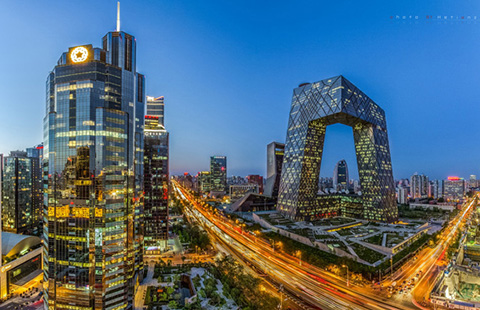
BEIJING - As China's foreign trade languishes in the doldrums, speedy growth of cross-border e-commerce has brought some breezy optimism to a depressed marketplace.
Cross-border retail orders of e-commerce firm vip.com increased sharply this year, with some 500,000 packages handled per day. Warehouse space is at a premium as the current 5,000 square meter distribution center is full, said Wang Bobo, head of customs affairs for imported commodities of a logistics firm.
In the first five months, the volume of cross-border e-commerce trade via Guangzhou Customs was 18 times the total of last year. Other provinces such as Zhejiang and Shandong are also finding ways of using cross-border e-commerce to increase foreign trade.
"Though sales volume has not grown much, our gross profit has doubled through e-commerce," said Ma Fangda, general manager of Shunshi Photovoltaics in Qingdao, Shandong.
China's economy posted slightly better than expected growth of 7 percent in Q2, the same as Q1. It is widely hoped that reforms will kick in during the second half of the year and steady improvement will follow.
Pressure
China has been trying to shift to quality growth driven by innovation, and the required structural reforms are far from easy to implement. Cutting excess industrial capacity is difficult to execute and industrial upgrades need innovation. Innovation must precede upgrades, another hard nut to crack.
The northern province of Hebei, for example, faces the tasks of cutting iron, steel, cement and glass capacities. Liaoning province in the northeast, the old industrial base, is locked in a similar struggle.
Statistics for the first half of the year have not been officially announced by provinces, but Q1 performance may offer some clues.
Hebei's economy grew by an annualized 6.2 percent in Q1, two percentage points higher than the same period last year. Added-value growth in equipment manufacturing was almost double that of other industries in the first five months. The problem is that Hebei's foreign trade from January to May actually fell 12.6 percent year-on-year.
"The effects of structural adjustments have become more obvious in the first half and, on the whole, the economy is on the up." This was the word from a meeting of the Hebei provincial committee of the Communist Party of China (CPC) held on Monday. According to the committee, the picture is certainly not entirely one of doom and gloom. There are many favorable factors, particularly the Beijing-Tianjin-Hebei integrated development strategy.
Liaoning only reported growth of 1.9 percent in Q1, the slowest in the country. Industrial added value, fixed asset investment and foreign trade, all fell in the first four months.
"Since last year, we have bid on 60 projects, and been successful on only one. We are living off our own fat," said Yao Yongke, general manager of Dalian Shipbuilding Industry Offshore. The demand for offshore oil rigs, previously a jewel in Liaoning's economic crown, has shrunk sharply as international oil prices have fallen.
Liaoning has launched 274 major construction projects since the beginning of last year with a huge total investment. Officials and entrepreneurs alike in Liaoning are clamoring for reforms to reduce government intervention in business operations.
Prospects
While policies such as interest rate cuts help, China's real economy will gain more momentum from the Belt and Road Initiative, Beijing-Tianjin-Hebei integrated development, the Yangtze River economic belt and free trade zones than from administrative reform.
A brand new factory built by China Railway Rolling Stock Corp (CRRC) began making trains in April, but in Malaysia. It is the first step overseas for China's rail equipment manufacturers. The importance of this shift from simply exporting products to establishing manufacturing bases overseas using Chinese technology, services and money should not be underestimated.
International cooperation in industrial capacity is an area where China's existing expertise could prove invaluable, but free trade zones are showing a strong propensity for attracting foreign investment.
At the end of May, just over a month after they opened for business, Guangdong, Tianjin and Fujian FTZs had attracted 7.8 billion yuan, 11.7 billion yuan and 3.2 billion yuan respectively, accounting for 45.3 percent, 69.4 percent and 53.6 percent of total foreign investment in their respective regions, according to the Ministry of Commerce.
Boosted by the Silk Road Belt and Road plan, cargo trains linking China and Europe are on the increase. On Tuesday, a 41-container cargo train completed its maiden voyage from Hamburg, Germany, to Harbin in the northeast province of Heilongjiang. A route from Zhengzhou in central China to Hamburg now has two trains in each direction every week. Chongqing and Chengdu in the southwest, Wuhan, Zhengzhou and Changsha in central China, and Shenyang and Harbin, in the northeast, all now have rail freight services to Europe.
Major national strategies can bring huge potential to China's economy. It is now up to China's new army of innovators and entrepreneurs to extract maximum value from that potential.








